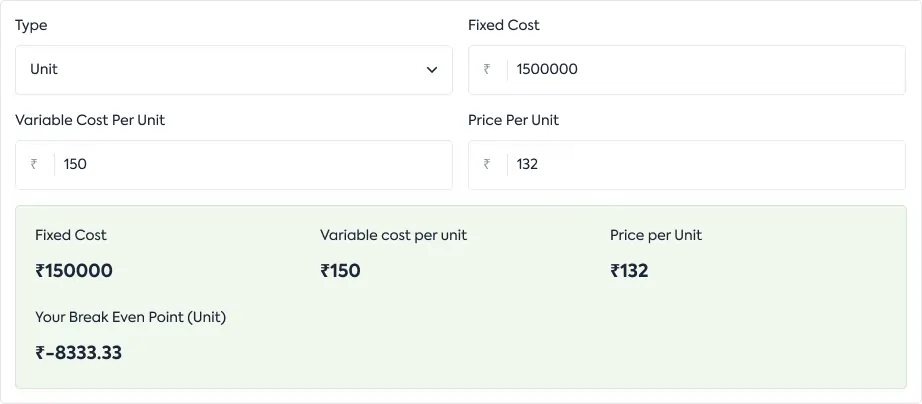Grab a chance to avail 6 Months of Performance Module for FREE
Book a free demo session & learn more about it!
-
Will customized solution for your needs
-
Empowering users with user-friendly features
-
Driving success across diverse industries, everywhere.
Grab a chance to avail 6 Months of Performance Module for FREE
Book a free demo session & learn more about it!
Superworks
Modern HR Workplace
Your Partner in the entire Employee Life Cycle
From recruitment to retirement manage every stage of employee lifecycle with ease.


Seamless onboarding & offboarding
Automated compliance & payroll
Track performance & engagement

Introduction:
An EPF (Employees’ Provident Fund) Calculator is a financial tool designed to assist employees and employers in estimating EPF contributions accurately. The EPF scheme is a government-backed retirement savings plan in India, where both employees and employers make contributions towards the employee’s retirement fund. This guide aims to explain the purpose of an EPF Calculator, how it works, key considerations, and the benefits it offers.
What is an EPF Calculator and its Purpose?
An EPF Calculator is a tool used to calculate the monthly contributions towards an employee’s EPF account based on their salary and the prevailing EPF contribution rates. Its purpose is to help employees and employers determine the exact amount of EPF deductions and contributions, facilitating accurate financial planning and compliance with EPF regulations.
How Does an EPF Calculator Work?
Many want to know how to calculate EPF interest, right? Thus, users input specific details such as the employee’s basic salary, dearness allowance, and other components into the EPF return calculator. The calculator then computes the employee’s EPF contribution, the employer’s EPF contribution, and the total EPF amount based on the current EPF contribution rates set by the government.
Key Considerations in EPF Calculation:
-
Basic Salary and Allowances:
Many have doubts over how EPF interest is calculated. EPF contributions are typically calculated based on the employee’s basic salary and dearness allowance. Other allowances may or may not be included, depending on EPF regulations and company policies.
-
EPF Contribution Rates:
The EPF contribution rates are determined by the government and may vary over time. Employers and employees should ensure they are using the correct contribution rates specified by EPF authorities for accurate calculations.
-
Employer’s Contribution Responsibilities:
Employers are responsible for deducting EPF contributions from employees’ salaries and matching these contributions with their own contributions, ensuring timely deposits into employees’ EPF accounts.
Make Your EPF calculations more efficient with deeper insights: Payroll Sofware
Benefits of Using an EPF Pension Calculator:
-
Accuracy and Compliance:
The EPF pension calculator Excel ensures accurate calculation of EPF contributions, minimizing errors and ensuring compliance with EPF regulations and guidelines.
-
Financial Planning:
Employees can use the calculator to estimate their EPF contributions and plan their retirement savings effectively, considering the impact of EPF deductions on their take-home pay.
-
Employer Compliance:
Employers can use the calculator to determine the employer’s share of EPF contributions accurately, facilitating compliance with EPF regulations and avoiding penalties for non-compliance.
EPF Contribution=Basic Salary×EPF Rate
-
EPF Calculator Formula:
Employee’s provident fund becomes the source of income for the post-retirement period. But it goes like this, a sum of money [which is 12%] would be cut off from the employee’s salary. And the same amount of money [which is 12% of the employee’s money] would be provided by the employer! The total amount will keep building up and will be saved for the future.
Other than that employer’s 12% amount would be charged with a 0.5% admin charge, and another 0.5% EDLI charge [employee deposit linked insurance]! Other than that, there’s a catch for the company only, where they can apply the 12% over the actual employee income or restrict it to only 15,000!
EPF Pension Calculation Formula:
EPF = Employee’s 12% + Employer’s 12% * 0.5% [EDIL] *0.5 [admin charge]
FAQs for EPF Calculator:
1. How is the EPF contribution rate determined, and are there different rates for employees in various industries or sectors?
The EPF contribution rate is determined by the government and is subject to periodic revisions. While the basic EPF contribution rate is uniform across industries, certain sectors may have specific provisions or exemptions regarding EPF contributions.
2. Can employees choose to increase their EPF contribution voluntarily, and what are the implications for employers?
Yes, employees have the option to increase their EPF contribution voluntarily through the Voluntary Provident Fund (VPF) scheme. However, employers are only required to match the contributions up to the mandated EPF contribution rate, and any additional contributions made by employees are solely their responsibility.
3. Are EPF contributions taxable, and how are they treated for income tax purposes?
EPF contributions made by employees are eligible for tax benefits under Section 80C of the Income Tax Act, subject to certain limits and conditions. However, employer contributions exceeding a certain threshold may be treated as taxable income for employees.
4. What happens to EPF contributions if an employee changes jobs or becomes unemployed?
In the event of a job change or unemployment, employees have the option to transfer their EPF accounts to their new employers or maintain the accounts independently through the EPF withdrawal or transfer process. EPF contributions continue to accrue interest even during periods of unemployment.
5. How can employers ensure compliance with EPF regulations and avoid penalties for non-compliance?
Employers should regularly verify and update EPF contribution rates, ensure accurate calculation and timely deposit of EPF contributions, maintain proper records of employee contributions, and adhere to EPF guidelines and reporting requirements to avoid penalties and legal consequences for non-compliance.
Example of EPF Calculation:
Consider an employee with a basic salary of ₹40,000 and a dearness allowance of ₹5,000. If the employee contribution rate is 12% and the employer contribution rate is 3.67%, the EPF Calculator computes the monthly contributions for both employee and employer.
Conclusion:
An EPF interest calculator is a valuable tool for both employees and employers to estimate EPF contributions accurately. By considering key variables such as basic salary, EPF contribution rates, and employer responsibilities, the calculator facilitates accurate financial planning, compliance with EPF regulations, and effective management of retirement savings.
Employees and employers should ensure they use updated contribution rates and adhere to EPF guidelines to maximize the benefits of the EPF scheme. You can have a better idea regarding the payroll calculator when you understand the operational value of payroll software at superworks!
